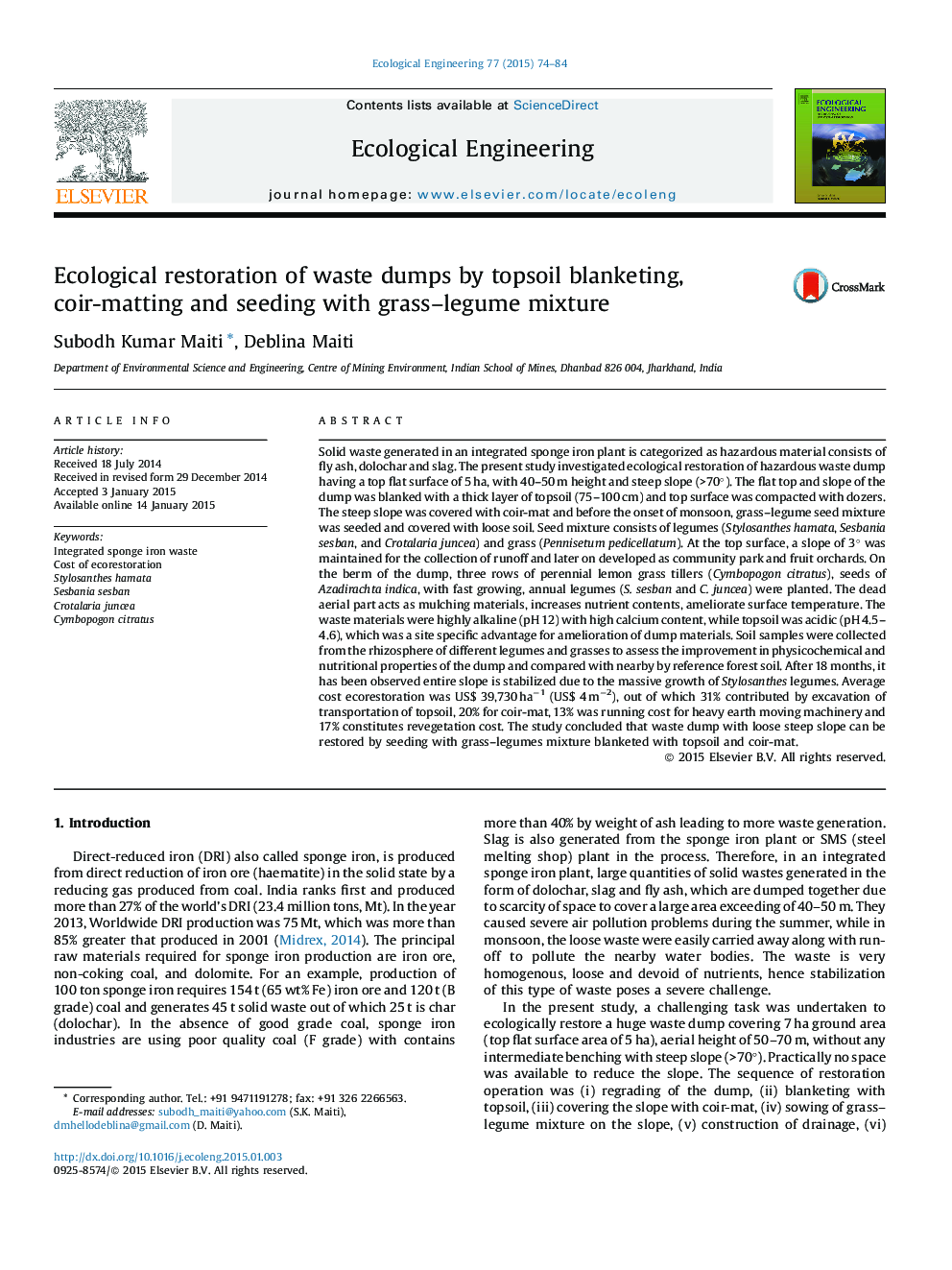| Article ID | Journal | Published Year | Pages | File Type |
|---|---|---|---|---|
| 4389251 | Ecological Engineering | 2015 | 11 Pages |
•Hazardous waste dump with steep slope (>70°) of 45–50 m length could be easily stabilize ecologically by blanketing with topsoil and coir-mat and seeding with grass–legume mixture.•In dry tropical climate, grass–legumes mix (Stylosanthe hamata–Pennisetum pedicellatum) found suitable.•Topsoil thickness of 70–100 cm was found sufficient for restoration.•Total ecorestoration cost comes to approximately US$ 39,730 ha−1 (US$ 4 m−2) and biological restoration constitutes 17% of the total cost.
Solid waste generated in an integrated sponge iron plant is categorized as hazardous material consists of fly ash, dolochar and slag. The present study investigated ecological restoration of hazardous waste dump having a top flat surface of 5 ha, with 40–50 m height and steep slope (>70°). The flat top and slope of the dump was blanked with a thick layer of topsoil (75–100 cm) and top surface was compacted with dozers. The steep slope was covered with coir-mat and before the onset of monsoon, grass–legume seed mixture was seeded and covered with loose soil. Seed mixture consists of legumes (Stylosanthes hamata, Sesbania sesban, and Crotalaria juncea) and grass (Pennisetum pedicellatum). At the top surface, a slope of 3° was maintained for the collection of runoff and later on developed as community park and fruit orchards. On the berm of the dump, three rows of perennial lemon grass tillers (Cymbopogon citratus), seeds of Azadirachta indica, with fast growing, annual legumes (S. sesban and C. juncea) were planted. The dead aerial part acts as mulching materials, increases nutrient contents, ameliorate surface temperature. The waste materials were highly alkaline (pH 12) with high calcium content, while topsoil was acidic (pH 4.5–4.6), which was a site specific advantage for amelioration of dump materials. Soil samples were collected from the rhizosphere of different legumes and grasses to assess the improvement in physicochemical and nutritional properties of the dump and compared with nearby by reference forest soil. After 18 months, it has been observed entire slope is stabilized due to the massive growth of Stylosanthes legumes. Average cost ecorestoration was US$ 39,730 ha−1 (US$ 4 m−2), out of which 31% contributed by excavation of transportation of topsoil, 20% for coir-mat, 13% was running cost for heavy earth moving machinery and 17% constitutes revegetation cost. The study concluded that waste dump with loose steep slope can be restored by seeding with grass–legumes mixture blanketed with topsoil and coir-mat.
Graphical abstractFigure optionsDownload full-size imageDownload as PowerPoint slide
